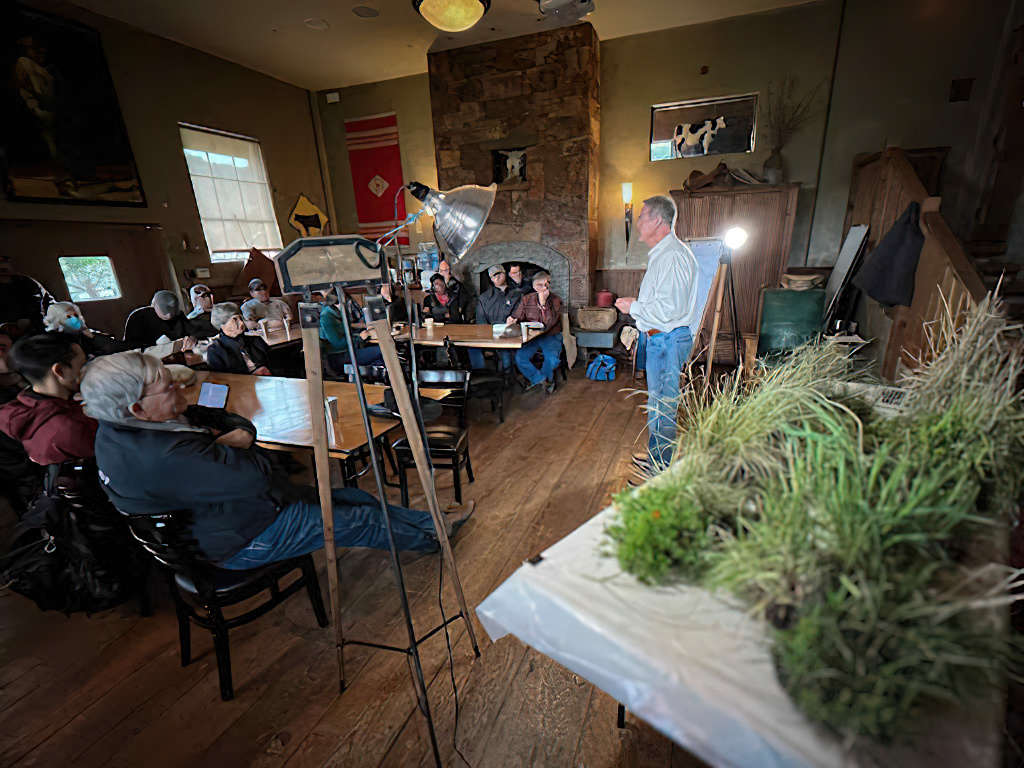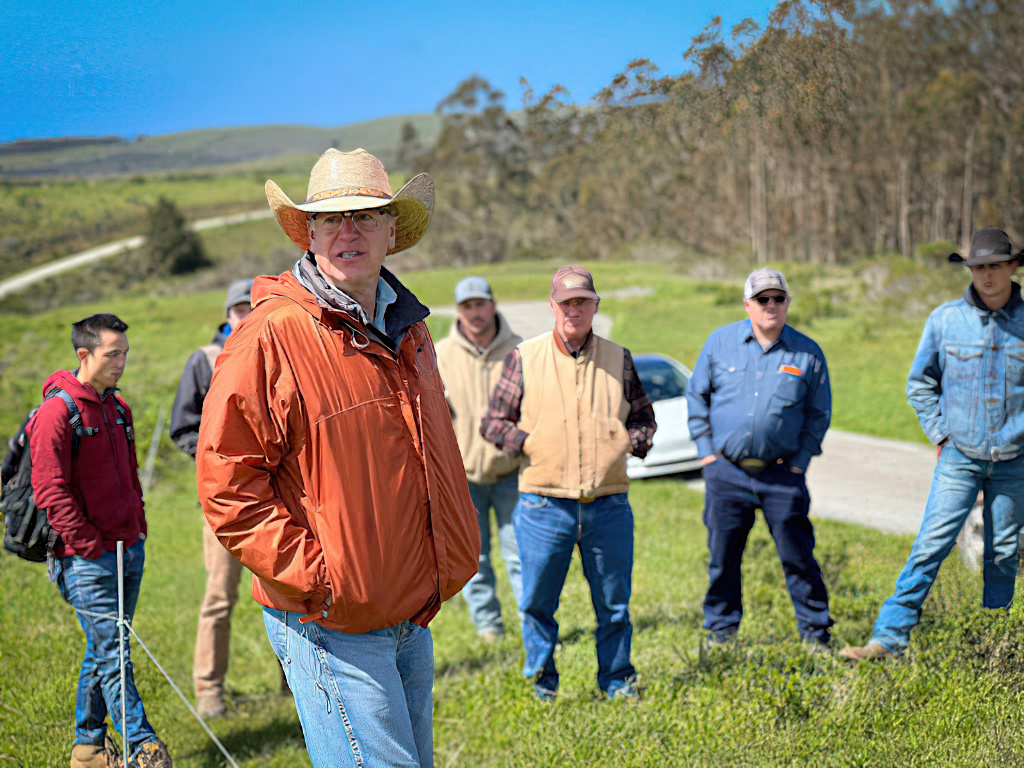Is It Possible for A Cattle Ranch To Be Economically and Environmentally Sustainable? Matt Ricketts Thinks So
On March 22-23, 2023, Matt Ricketts of Triple R Bar S Consulting in collaboration with Vern and Ford Smith of Regenerative Land Solutions hosted a workshop (and masterclass!) at TomKat Ranch. Participants included ranchers, scientists, agency and land trust staff. The invitation: Come share ideas and discuss important questions about how to build resilience for California ranchlands. Over thirty people gathered to explore questions relevant to holistic land management, such as:
- How do we know if our land is healthy? What signs do we look for? How can we improve? What are the steps?
- What are the plants telling us about the underlying health of the land and the soil?
- What is the connection between animal health and grassland nutrition? What plants provide what nutrients? Are the weeds really weeds or can they be healthy food for livestock? Do our livestock fit our forage quality?
We were introduced to Matt Ricketts by a friend who sent a video of Matt speaking to a group of ranchers in Montana. Our Land & Livestock team watched the video twice—and some parts several times—to take note of specific information on grasses & forbes, invasives & natives, the phenology of plants, drought, weed resistance, how different plants interact with soil, weather, grazing, and more.

At the event, Matt Ricketts presented various forage samples obtained from TomKat Ranch to showcase the diverse species to the audience.
Intrigued, we invited Matt to California to share his 40 years of experience as a land management and ranching consultant—built on a family ranching legacy that spans five generations—and engage in discussions about the ecosystems and landscapes we manage.
Together, we walked the land and shared observations and perspectives that will enable us all to be better stewards of these complex ecosystems. Thanks to Matt and his collaborators, we have many new insights to broaden our view of the “whole.”
One foundational insight (and a perpetual reminder for stewards everywhere) is the importance of understanding your ecological context. Ecosystems (or “ecological systems”) are made up of various “parts” of an interconnected “whole.” The biological community that makes up an ecosystem—single-celled microorganisms, plants, trees, and animals (including humans)—is ever-changing. The basic idea of holism is that the whole is greater than the sum of its parts. The dynamic, complex relationships between individuals within a system, and the properties that emerge as a result of their interconnection, are the foundation of life on Earth. No one ‘thing’ can exist solely on its own.
In a regenerative context, where the aim is to create conditions for ecological, economic, and social resilience, it is critically important to develop knowledge and skills for managing complex systems holistically. For regenerative ranchers, we must become “systems thinkers” to understand the ecosystems and landscapes we manage: understand the micro (plants, microbes, etc.) in order to understand the macro, and vice versa. While this can sound a bit theoretical, it is quite tangible and actionable; see the Savory Institute’s new animated short (~3 minutes).
Though pastures may look like one big carpet of green to non-ranchers, to the TomKat Ranch team who works on the land every day, we see a diverse and ever-changing community of life. To manage the landscape in a way that increases resilience—including creating an effective grazing plan—it is imperative that we understand the plants that live here. This inherently means understanding a multitude of dynamic relationships: the interactions between different plants at different times of year, the energy they receive from the sun, the nourishment they receive from the soil and rain, the impact of humans and animals. There is so much to learn!
In that spirit, prior to the workshop, Matt spent a day on the land with our team observing what was growing in the fields and hills. Matt emphasized the need for a rigorous, ranch-wide forage inventory: regular monitoring of plant density, variety, health, and stature at holistically selected sites across the ranch. Matt’s approach to forage monitoring offers a nuanced addition to our current vegetation monitoring as it relates to grazing planning and livestock nutrition.
We learned that by analyzing the dry weight of forage ‘clippings’ gathered from monitoring sites, it is possible to improve the accuracy of our livestock stocking rate. How? By developing an understanding of: 1) what types of plants are growing, 2) how many of these different types of plants are growing, 3) where they are growing, 4) when they are growing, and 5) why they are growing. Simply, by attuning to the landscape.
Regular forage inventories in addition to careful observation and ecological data such as soil type, slope, and aspect, empower land managers to understand the landscape in a deeper manner. With this deeper understanding, we improve our ability to have animals in the right place, at the right time, for the right reasons.
Coming away from the event, we realized Matt’s visit invited us into a new mindset. While we are still excited about our successes with the expansion of perennial grassesand their benefits to the ranch, we are now looking at the full range of beneficial species. By better understanding our mosaic of diverse plants and their symbiotic relationships, we can better address the whole of our ecological systems. And when we understand and address the whole, we become better regenerative stewards and assure a lasting legacy for future generations.
